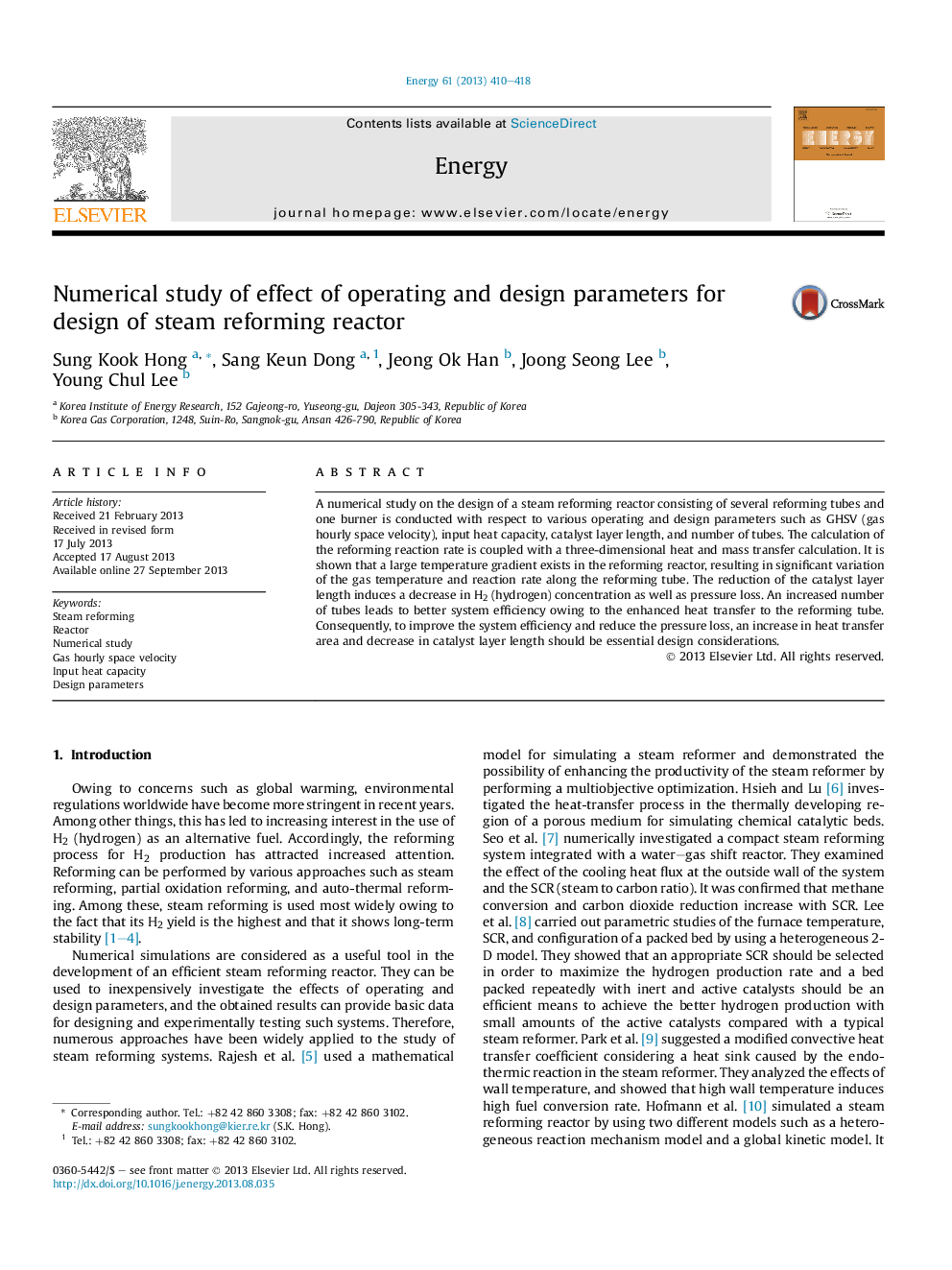| Article ID | Journal | Published Year | Pages | File Type |
|---|---|---|---|---|
| 8079116 | Energy | 2013 | 9 Pages |
Abstract
A numerical study on the design of a steam reforming reactor consisting of several reforming tubes and one burner is conducted with respect to various operating and design parameters such as GHSV (gas hourly space velocity), input heat capacity, catalyst layer length, and number of tubes. The calculation of the reforming reaction rate is coupled with a three-dimensional heat and mass transfer calculation. It is shown that a large temperature gradient exists in the reforming reactor, resulting in significant variation of the gas temperature and reaction rate along the reforming tube. The reduction of the catalyst layer length induces a decrease in H2 (hydrogen) concentration as well as pressure loss. An increased number of tubes leads to better system efficiency owing to the enhanced heat transfer to the reforming tube. Consequently, to improve the system efficiency and reduce the pressure loss, an increase in heat transfer area and decrease in catalyst layer length should be essential design considerations.
Related Topics
Physical Sciences and Engineering
Energy
Energy (General)
Authors
Sung Kook Hong, Sang Keun Dong, Jeong Ok Han, Joong Seong Lee, Young Chul Lee,
